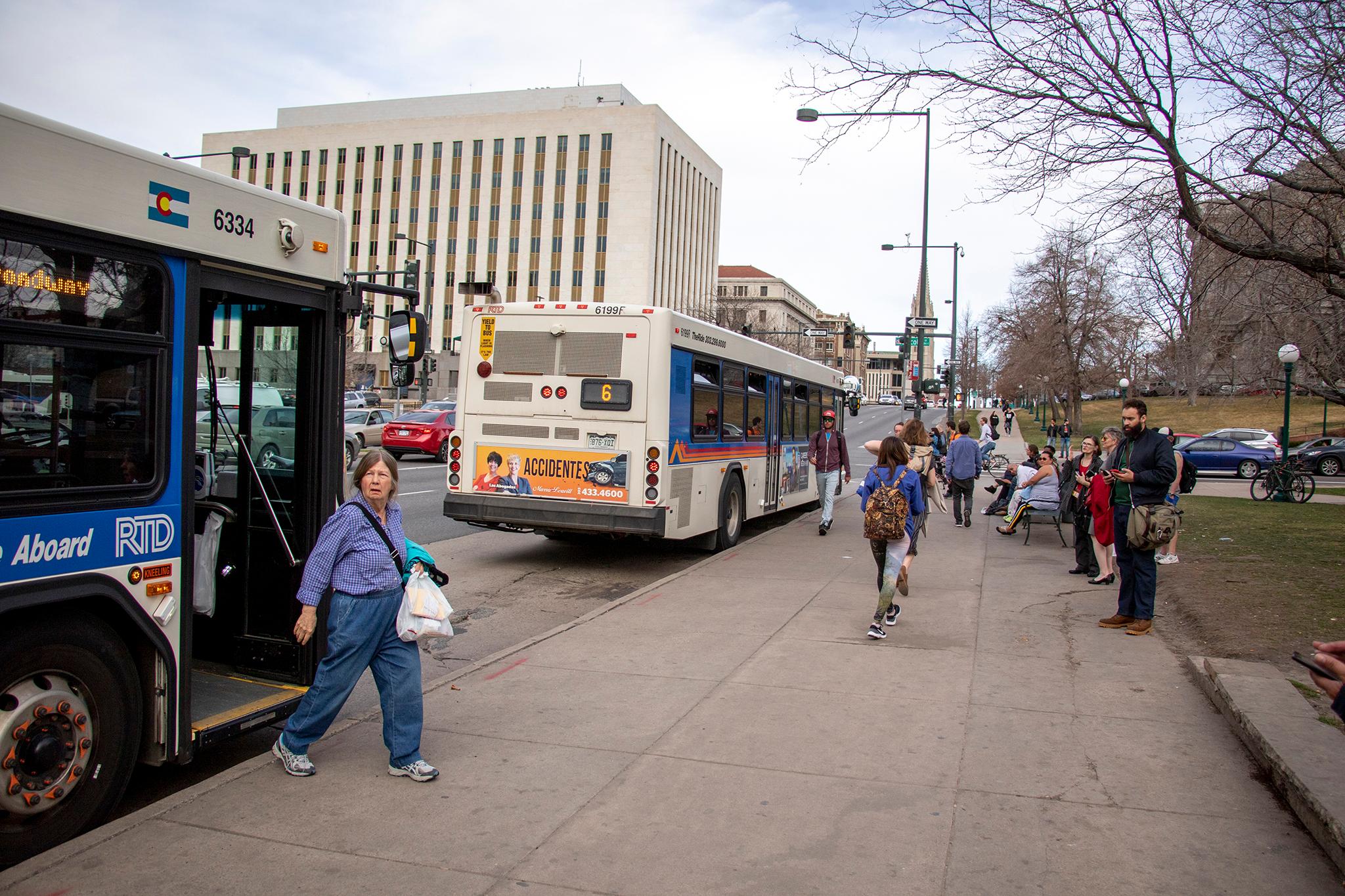
Should the Regional Transportation District try to serve every last corner of its 2,342-square miles coverage area, which covers everything from downtown Denver to suburbs to mountain hamlets? Or should it boost ridership numbers by focusing its resources on high-density corridors?
High-profile transit consultant Jarrett Walker presented that question to RTD’s Board of Directors Tuesday night as the agency kicked off a two-year rethink of strategic priorities called “Reimagine RTD.”
RTD faces serious headwinds; ridership numbers are falling and it doesn’t have the money needed to finish rail projects promised to voters 15 years ago. All the while, ride-hailing companies like Uber and Lyft and even electric scooters present new competition for traditional transit.
That’s what is behind RTD’s current mission to reconsider what it does, and for whom. Striking the right balance between ridership and coverage is key to that, Walker argued.
"They are opposites because they lead to opposite kinds of networks,” he said. “When you tell your staff you want both, it's like telling a taxi driver to turn left and right at the same time."
If RTD were to focus more on ridership, Walker said, it could cut the number of bus routes in low-density areas and instead have fewer lines that run far more frequently. Urban-style roads with high density and, thus more potential riders, would be the first priority. Walker led a complete overhaul of Houston’s bus system a few years ago that shifted closer to such a model.
"A few people lost the bus stop near their home in return for this outcome. Those people were furious," he said. "[But] in the end, Houston is now the only major Texas city where ridership is stable or rising."
On the other hand, RTD could run more buses to suburban and rural areas that don’t get it now. Those buses could run empty much of the time, but if the board decides the measure of success is accessibility, low ridership numbers wouldn’t matter as much.
Walker also advised board members to come to terms with what the agency can change and what it can’t: the nature of many of the places it tries to serve.
"The way a community is laid out is going to have an overwhelming impact on what transit can achieve there, and whether intensive transit is going to be a good investment,” he said. “And because so many people want to take that personally, we just have to overemphasize that this is not personal. This is geometry, and there's no getting around it."
It’s also possible municipalities will pay RTD for more service in their areas; Denver will ask voters in November to fund a new department of transportation that, among other things, could do just that.
Several board members said that political realities, and federal regulations that say any changes must not disparately affect minorities, limit what RTD can do. Shontel Lewis, who represents northeast Denver, from historic neighborhoods like Five Points to the far reaches of the city near Denver International Airport, said black residents have been priced out of older parts of the city.
"The walkability that you talked about, and the density, may not be in the areas that people are being displaced into," Lewis said.
Walker pointed to a similar phenomenon in his hometown of Portland, Oregon. The transit agency there identified new high-frequency bus corridors in inner-rung suburbs to provide service where it’s needed.
"Not to every person out there, but to enough places that if you're a low-income person, there are places you could choose to live where transit would be good,” he said.
Hanging over the discussion was RTD’s unfinished, and unfunded, rail lines that were promised in the 2004 FasTracks vote. The highest-profile outstanding piece of that multi-billion project is a 41-mile line from Denver to Boulder and Longmont, now projected to cost $1.5 billion. Taxpayers in the northwest metro have grown more and more angry as RTD has completed other lower-cost lines while pushing the Longmont train’s completion date back by decades.
Board members just declared their commitment to finishing the entire FasTracks project. Vince Buzek noted Tuesday that the agency made a very public promise 15 years ago, and that complicates any plan to cut service.
"RTD is an incomplete system. We haven't finished what we are slated to do,” the board member said.
Walker said it might be time to have a tough discussion about whether any unfinished projects are still worth it, echoing a sentiment put forward by local transit advocates.
“And at some point, not having built a project could be a good thing if it means you now have a chance to design a better project that's more appropriate,” he said.
Board chair Doug Tisdale and RTD General Manager Dave Genova both stressed that Walker’s presentation was merely informational and meant to stir discussion. RTD paid Walker $18,000 to give it twice, both to the board Tuesday and to local elected officials Wednesday.
"I'm hearing some things, I'm sure staff is hearing some things tonight, I'm sure you're all hearing some things tonight, that are making us a little bit uncomfortable,” Genova said. “How do we want to address some of these things? The good news is we have a lot of time to work through this. It may turn out at the end of the day, and I don't know if this will be the case or not, we may decide we are happy with exactly what we are doing.”









